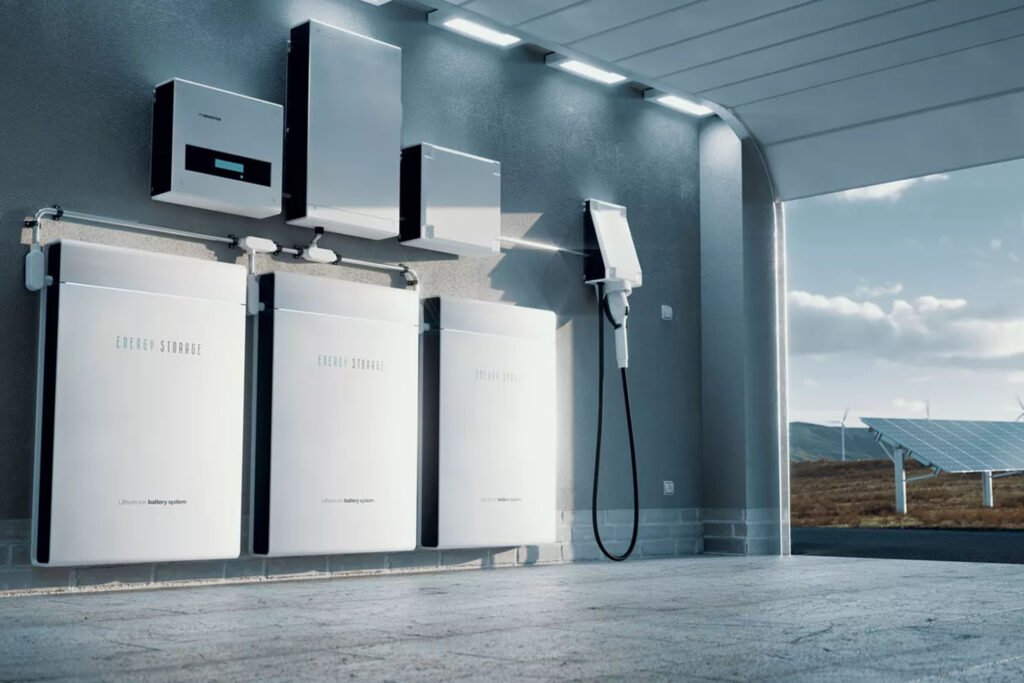
Solar battery storage (commonly referred to as solar+storage) is a booming industry. When pairing solar panels with battery storage, homeowners can store excess electricity produced by their solar panels in order to expand their options for how they use their solar energy—and how they can profit from it. Solar battery storage allows them to rely less (or, in emergencies, not at all) on the electricity grid to potentially lower their costs and even to supplement their income.
The Rise of Solar Energy Storage
As climate change increases the frequency and potency of extreme weather, resilience becomes more and more important to homeowners, and they are turning to solar+storage for help.
When the power went out in Texas and parts of the Southeast in February 2021, a homeowner shared how he was able to keep his refrigerator running and his heat and lights on because he had solar panels on his roof and a battery storage system in his garage. Interest in solar and battery storage systems more than doubled during and after the blackout.
In recent years, catastrophic wildfires and blackouts produced a surge in residential battery storage in California and Australia. Climate-driven extreme heat also continues to threaten energy systems with outages, with more consumers turning on air conditioners at the very time that power lines have more limited capacity to carry electricity.
The push for solar+storage has also been accelerated by plummeting prices and government incentives. Lithium-ion battery prices dropped 89% between 2010 and 2020, driven largely by the increasing production of electric vehicles. The federal investment tax credit for renewable energy can be applied to batteries if they are charged using a solar system (rather than directly from the grid). California, Massachusetts, and New York also provide incentives to homeowners for installing batteries along with their solar panels. In wildfire-prone areas, California’s Self-Generation Incentive Program pays for nearly the entirety of a battery installation.
Homeowners aren’t the only ones realizing the benefits of solar+storage. Utilities such as the Los Angeles Department of Water and Power have been tying utility-scale solar projects with high-capacity batteries at prices far lower than fossil fuel plants. At the end of 2020, a third of all new utility-scale solar projects by capacity were paired with battery storage. In California, the rate was nearly two-thirds.
Types of Solar Batteries
Lithium-ion batteries dominate the solar energy storage industry, providing over 90% of utility-scale storage capacity in the United States.
For residential storage, lead-acid batteries have the virtues of low cost, recyclability, and long shelf life with little to no maintenance required, but they are heavy and have longer charge times. Lithium-ion batteries charge more quickly and can hold more energy per mass, making them the preferred choice of most home solar storage systems today, according to the Solar Energy Industries Association.
Considering their cycle life, performance, and cost, analysis by the U.S. Department of Energy shows lithium-ion batteries having the highest cost benefit, one which will only grow in coming years as the technology continues to mature and its prices to decline.The remaining 10% of utility-scale energy storage options—like pumped storage hydropower, flow batteries, sodium-sulfur batteries, molten salts, flywheels, and compressed air—are beyond the scale of homeowners.
Several other battery characteristics also determine the cost-effectiveness and usefulness of solar+storage systems.
Power and Capacity
Two similar-looking metrics—kW and kWh—are measurements of a battery’s power and capacity, respectively. A kilowatt is the amount of power that a battery can deliver at any one time, while a kilowatt-hour is the total amount of energy that the battery can store. The average U.S. household consumes just over 30 kWh per day, according to the U.S. Energy Information Administration, while battery systems are generally below that.
Round-Trip Efficiency
Round-trip efficiency is the measurement of how much energy is lost in the transfer and storage of electrons in and out of the battery. The loss is usually around 5%.
Battery Life
Battery life is measured by the number of cycles of charge and discharge it can go through. Eventually, batteries degrade over time and lose their ability to hold the same level of charge.






